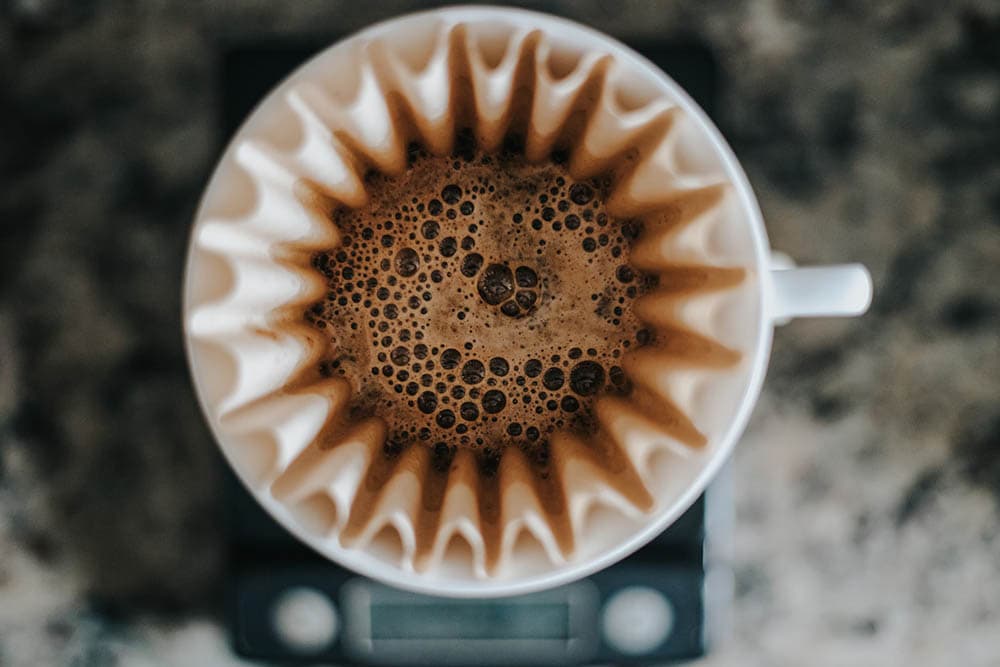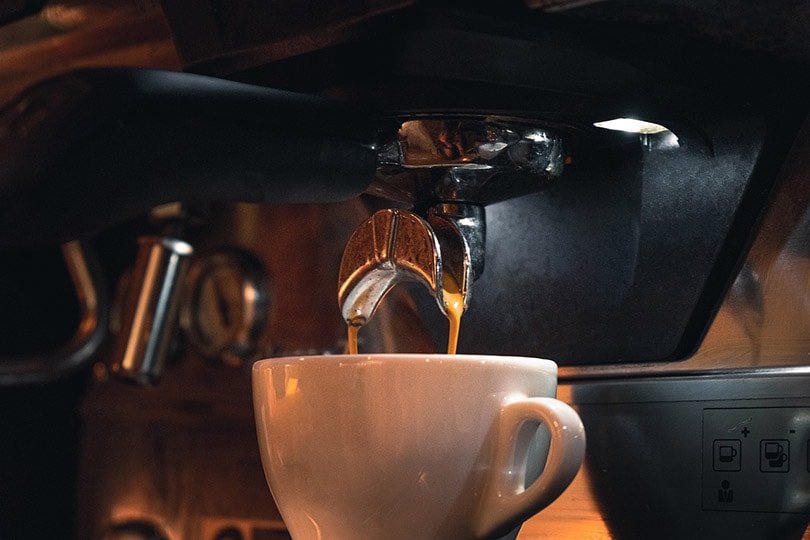
For most people, when you first start making coffee at home, there’s nothing special in your cup. Grabbing a can of affordable coffee at the supermarket, tossing a few unlevel scoops into a filter, and adding water gives you a cup of coffee to wake up to, but is it comparable to other coffees? Most likely not. The big question is why?
Several important factors must come together, at the right moment, to make the perfect cup of coffee. The right grinds, sized properly, temperature, and even water ratio must be on point if you want to change the taste of the coffee you make at home. Let’s take a look at extraction and coffee brewing so you can learn how to make the perfect cup of coffee each time you step into your kitchen.

What Is Coffee Extraction?
Simply put, coffee extraction is the process of using dissolving water to pull flavors and other properties out of the coffee grounds you use. During extraction, you will pull the bitter caffeine and bright acids first. Then the oils, sugars, and solids will be extracted. The final component to be pulled from the coffee is the darker compounds. The real trick, however, is finding your sweet spot so you can make a great cup of coffee using this process.

What Affects Coffee Extraction?
Brewing great coffee takes the right balance. If you have all the variables working together the extraction process can be more well-rounded, resulting in a better cup of coffee. Let’s take a look at those variables so you can find which process is best for your taste buds.
Coffee Grind Size
When using smaller coffee grounds, water will extract the good stuff faster. This is why most coffee beans are ground to the size you see them. It helps reduce the amount of time needed to make a good cup of coffee.
To help you determine which grind size is best suited for your favorite coffee brews, here’s a look at a few preferred grind sizes for some of the most popular brews.
| Aero Press: | Fine |
| Espresso: | Extra fine |
| Drip: | Medium |
| Percolator: | Coarse |
| French Press: | Coarse |
| Cold Brew: | Coarse |
Water Temperature
When it comes to water temperature, hotter is better. With hotter water, the changes you want to take place during the extraction process are more violent and happen faster. Most brewing experts feel that the ideal water temperature ranges from 195 to 205 degrees Fahrenheit.
Brew Time
The amount of time you brew your coffee determines how much water is extracted from the coffee grounds. A regular-sized cup of black coffee only needs around 2 to 4 minutes of brew time. Drinks with smaller coffee grounds, like espresso, can be brewed in as little as 20 to 30 seconds.

Water to Coffee Ratio
This is the trickiest part of extraction and brewing a good cup of coffee. If you add too much water, the coffee will be too weak. If you don’t use enough water, the coffee will be strong and in some cases overly bitter. The rule of thumb most people use is 15 to 18 grams (or milliliters) of water to 1 gram of coffee.
TDS or total dissolved solids in coffee is the amount of compounds left in your coffee after the final brew. As we mentioned above, the extraction process removes oils, sugars, and solids from coffee beans as your coffee brews. If the very important water-to-coffee ratio is off, the TDS you want in your cup may be weakened or far too strong for your liking.
Roast Type
Many people have their preferences when it comes to light and dark roasts. What you may not realize is how much the type of roast you use factors into the extraction and brewing of your coffee. Lighter roasted coffee beans are roasted less than dark roasted beans. This means they release fewer properties during extraction. What does this mean when making your coffee each day? You need to adjust the extraction variables to fit whichever roast you choose to brew. Keep in mind, lighter roasts will naturally be more difficult to extract. Increasing your brewing temperature or choosing finer grounds may be the answer to this issue.

Over-Extracted and Under-Extracted Coffee
You can’t look at a cup of coffee and tell whether it’s over-extracted or under-extracted. Unfortunately, taste is the main way of deciding. If your coffee is over-extracted most likely you’ve chosen a coffee grind that is too fine, used too high of a temperature or brewed your coffee too long. When this happens you’ll notice a bitter flavor when you try your coffee. If the brew is under-extracted it will taste sour. When this happens, the temperature has been too cold, your grinds too coarse, or your brew time too short.
Keep in mind that over-extraction isn’t the same as strong coffee. Coffee can be strong without being over-extracted. You’ll still taste the flavors of your coffee and have a balance. No one flavor will stand out. This isn’t the case with over-extracted coffee. The bitterness will be overpowering.

Other Things to Consider
While roast type, water to coffee ratio, grind size, water temperature, and brew time are the main things that affect the extraction process there are two others you should also keep in mind. One is agitation. This takes place when the coffee grinds are being moved and constantly dispersed in the water. This helps keep all coffee grounds exposed to water during brewing and aids in supporting the dissolution process.
Filters are the other factor. Certain brewing methods require a paper or metal filter. These can affect the extraction of the coffee beans during brewing. Paper filters are notorious for capturing oils. Especially, thicker ones. If you’re using a method where a paper or metal filter is required adjust your extraction and brewing processes accordingly.

Final Thoughts
As you can see, there are several factors to keep in mind when trying to make the perfect cup of coffee. Extracting the perfect amount of properties can be a work in progress, but when you reach your sweet spot, you’ll fall in love with what’s in your cup. The important thing is to not give up and keep trying. You’ll discover what works and what doesn’t with your brewing method. Before long, you’ll be an extraction and brewing master.
See Also:
Featured Image Credit: Devin Avery, Unsplash













